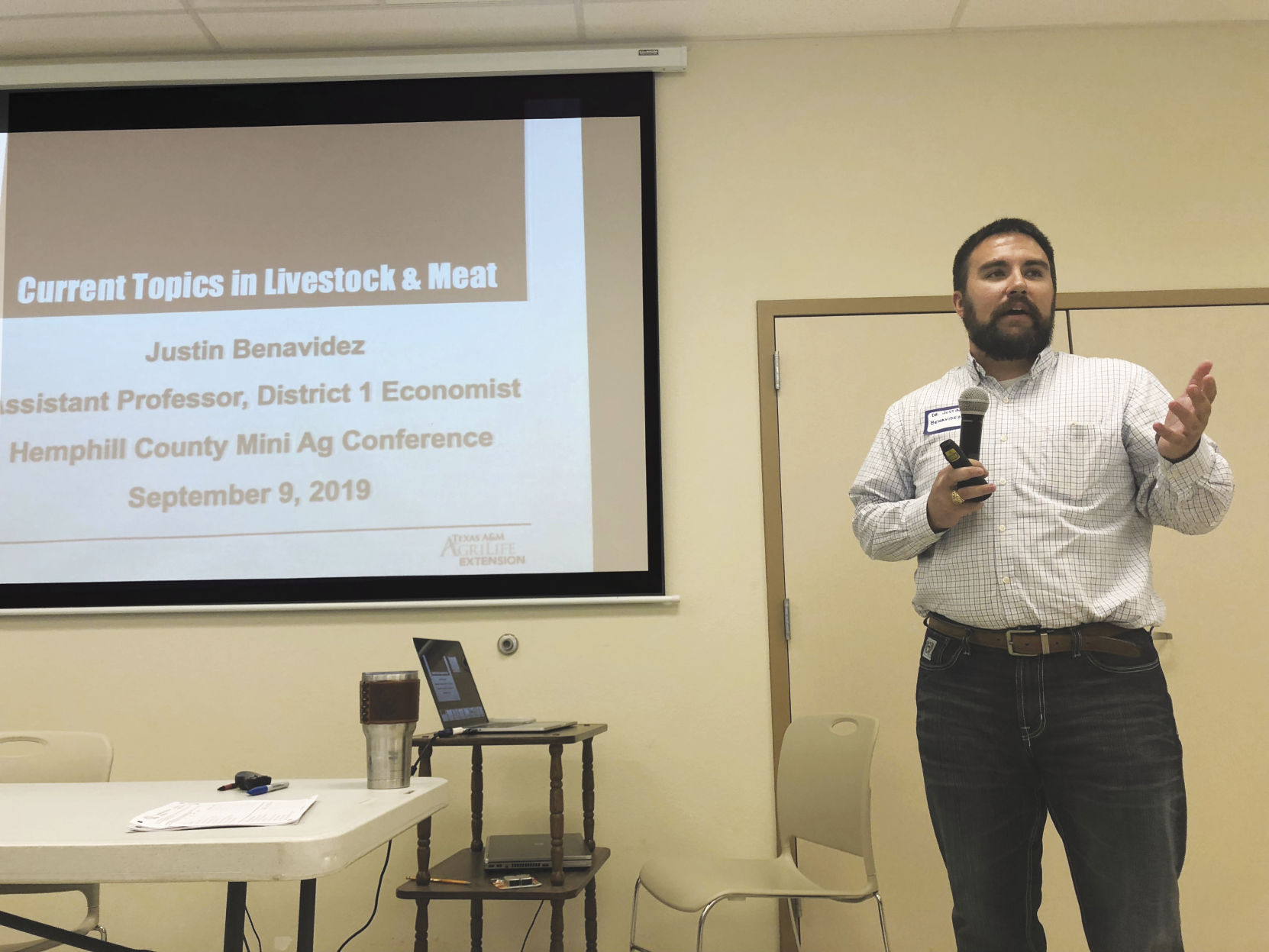Cattle markets and the economy lead Texas cattlemen’s concerns

Just one month after the Tyson Fresh Meats fire in Holcomb, Kansas, and with trade wars and domestic economy questions looming, Justin Benavidez, Texas A&M AgriLife Extension economist, spent his time in front of cattlemen trying to explain the economic forces at play in their market prices.
Benavidez wrapped up a morning of speakers at the 2019 Hemphill County Mini-Ag Conference in Canadian, Texas, Sept. 9. He said the market corrections following the Tyson fire were what could be expected when you consider the forces at play and the perceptions of far off buyers in those markets.
“So we are a month out now, basically what happened, the economic forces that we would expect took place,” he said. The beef and cattle markets are two different, but connected markets, he said. Now, the demand for beef stayed the same after the fire, but there was a perception of those buyers that less supply of beef would be available because they were seeing reports that this one plant was responsible for 6% of our beef supply, Benavidez explained.
“So if we see a decrease in supply, but a stable demand, we would expect the beef price to go up,” he said. And that’s what it did.
“On the other side, the demand for live cattle, the perception was that it went down 6% because we lost 6% of our production capacity,” he said. “And so if we see supply staying the same, but the demand going down, the perception would be that we would expect the price to drop because there was a perception that there would be a glut of cattle in the market.” But, with plants able to reorganize and restructure where cattle were going to be processed, moving production into Saturdays and more, the response on the ground didn’t catch up to the daytraders’ perceptions outside of the rural base. Those in the markets who don’t understand agriculture kept away from live cattle markets because their perception was of lost capacity and that’s what impacted both the cattle and boxed beef markets, he explained.
On the macro economic level, on the domestic side, Benavidez said economists are predicting a moderately slower economic growth in the near future.
“That’s not a recession,” he cautioned. “That’s not saying we are going into a recession. That’s a slow down of growth. So instead of 3% we’re looking at 2% total growth, what that means is that people might be more cautious in their investments.” One concern to monitor in the coming months is that there is now an inverted yield curve for Treasury bill interest rates, where long-term bonds have lower interest than short term bonds. This is concerning because while an inverted yield curve always precedes a recession, a recession doesn’t always follow an inverted yield curve, Benavidez explained. It’s really just a cautionary indicator and something to watch going forward.
On the global level, that economic slowdown could hit U.S. cattlemen with a reduced export demand from those developing countries that have been spending their new wealth on proteins.
“Globally, where we see a lot of demand for our proteins is in developing countries,” Benavidez said. “So if they see a slowdown in their economies, they will purchase less meat in those countries.”
Now, the wild card in all of this is African swine fever and its impact on global swine herds and the pork demand in general.
“This is a huge biosecurity issue,” Benavidez said. “It is critical we keep it out of the country, not to just protect our domestic herds and market, but to protect the consumer perceptions of the protein industry on the whole. Where it could impact us in the long term is that pork and beef are substitute products. So, if we see an increase in the price of pork here in the United States because people in China are demanding more of our pork, we would see more people switch from pork to beef and chicken because of the relative increase in price of pork.” A rise in demand for U.S. pork globally could also strengthen prices for U.S. beef and chicken.
Overall the outlook going into the fall, cattlemen may have some uncertainty on the trade front, but if they’ve got enough grass and forage to hang onto cows and stockers over the winter on into the spring they might set themselves up for success, Benavidez predicted.
“My overall outlook for the next few months is, if you have the grass to hold onto your animals, that would be a very good plan for now,” he said. “We’ve had places in the Panhandle that have had very good rainfall in the last couple of months. If you’ve got forage and cheap feed available to hold onto animals a little longer, you might see some premiums in the spring.”
That’s because people who are getting rid of their cows now are influencing the number of calves we’ll have in the spring 2020 and that lower calf crop could raise prices.
Jennifer M. Latzke can be reached at 620-227-1807 or [email protected].


